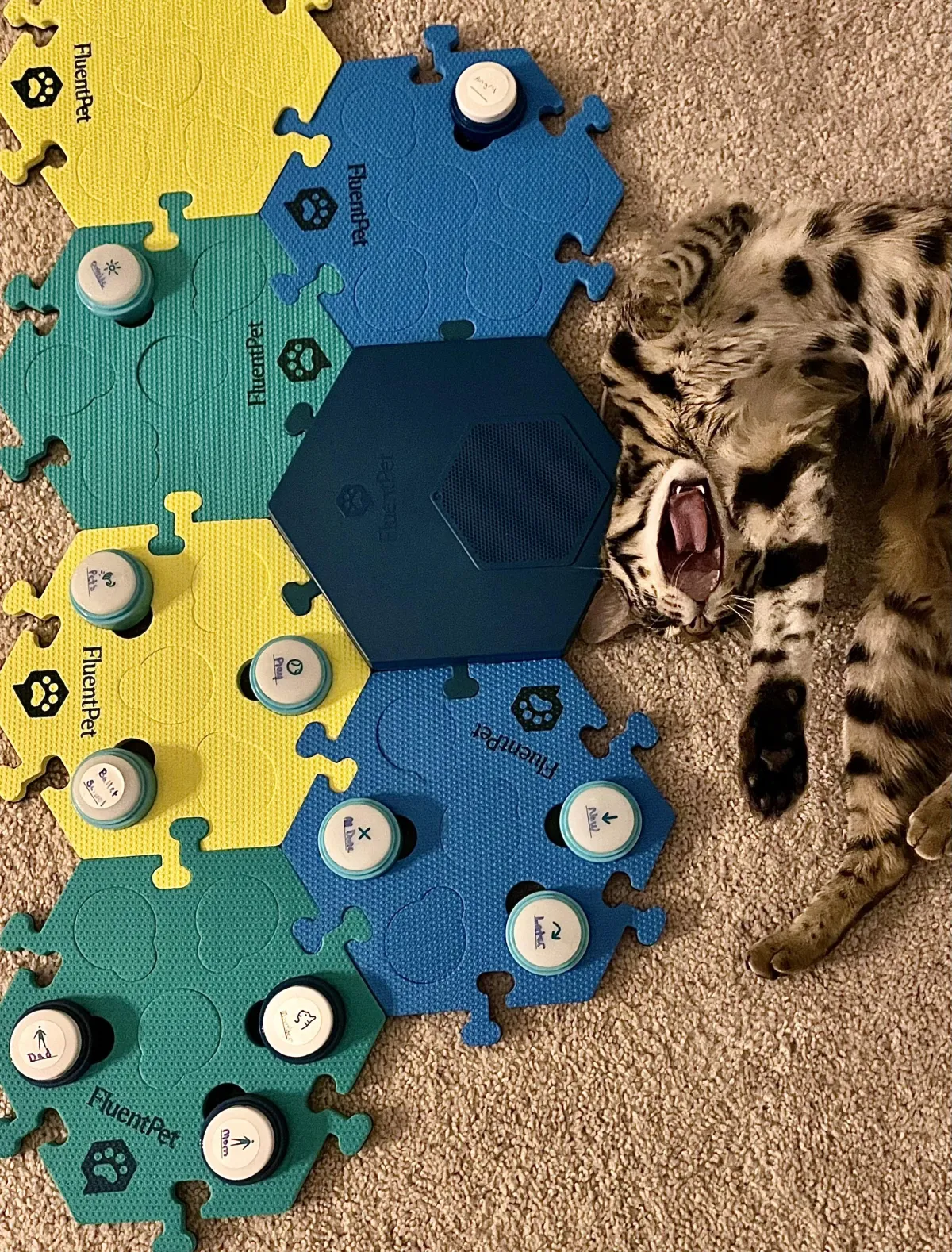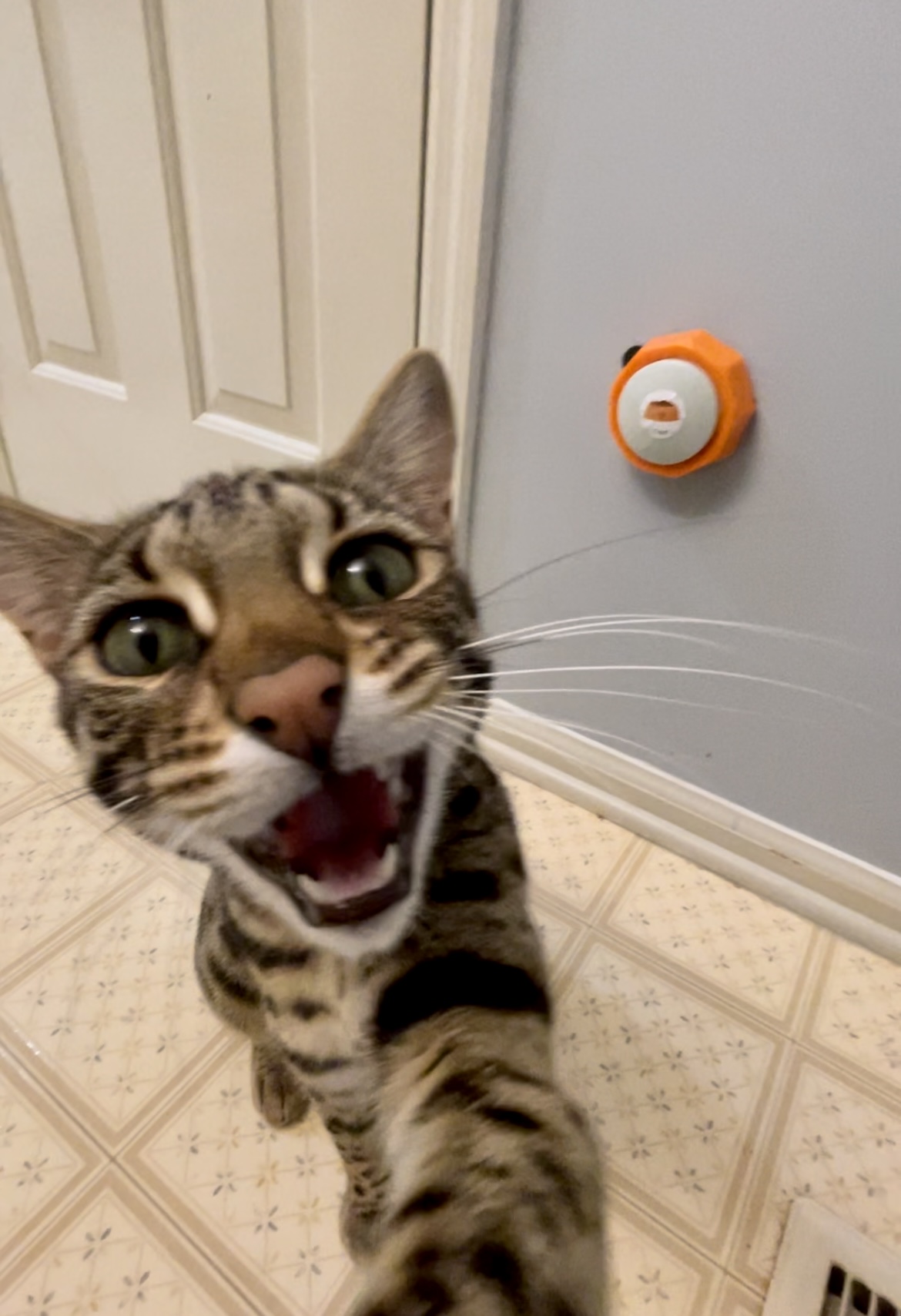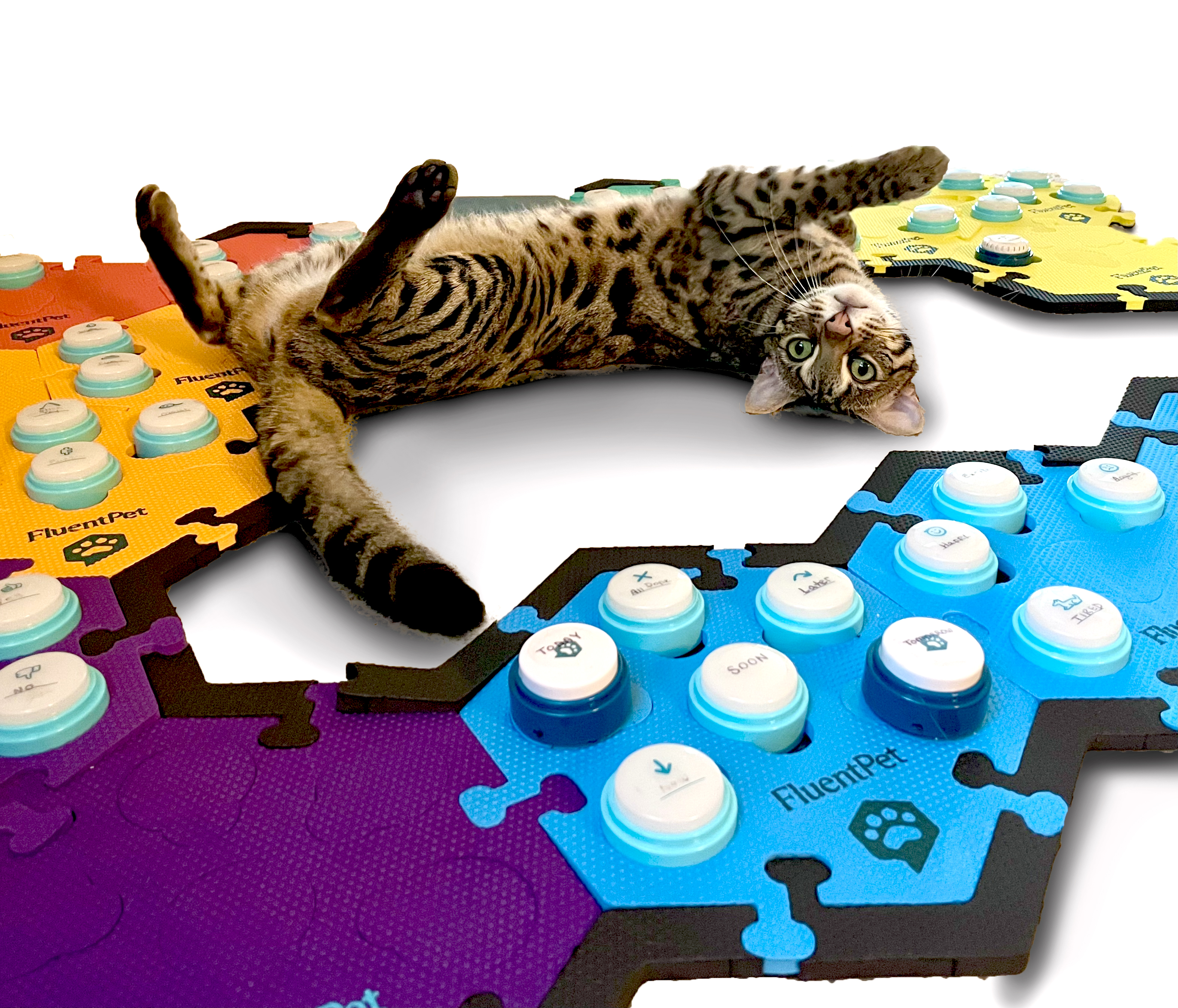
Why I Introduced Buttons to Flounder the Cat: A Journey from Chaos to Communication
When Flounder was just a tiny kitten—barely a few months old—life was, to put it mildly, loud. She screamed constantly. Not just meows or cute chirps, but screamed, all day, every day. She locked eyes with me in this intense, unwavering way, like she was desperately trying to say something. And while her vocalizations were constant, her behavior was just as intense—chewing on things, leaping into cabinets, knocking glass off the shelves like it was her job. It was clear she had something to say, but no real way to say it. We were clearly dealing with issues of boredom.
Then one day, I saw a video online of a dog communicating using speech buttons. I was deeply skeptical. I figured it was a TikTok or Instagram trend, maybe a bit of clever editing or wishful thinking. I didn’t believe animals could actually communicate that way. I had also never seen a cat talking. But I was also desperate. I thought, “Even if she doesn’t understand what she’s doing, maybe she’ll press a button instead of screaming at me all day.”

What if cats talking with buttons isn't a reality?
So I bought two buttons: “play” and “outside.” There aren't dog or cat buttons specifically, so I ended up getting these big clunky ones that had terrible sound and were difficult for her to press.
Even though I doubted it would work, I modeled the words as if I were teaching a language—because what if it did work? After all, these were such simple steps and I didn’t want to rob Flounder of the opportunity to truly use them.
After two weeks of consistent modeling, something amazing happened. She started pressing the buttons on the soundboard herself—and not randomly. When she pressed “outside,” she’d paw at the door. When she pressed “play,” she’d go to the drawer where I keep her toys. She wasn’t just pressing for fun—she understood the meaning of the buttons. That was the moment everything changed.
I added more words, and she kept up. Not only did she press them appropriately, but she consistently followed up with body language that matched her words. And suddenly... I had a talking cat.
What started as a personal experiment quickly became something much bigger. I initially created Flounder’s social media account just to keep track of her progress. I have a bad memory, so having the videos helped me reference her learning journey. But then something unexpected happened—other people started watching. And more than that, they started feeling inspired.
Flounder now has over 100,000 followers across social media platforms and has helped inspire countless other cats to begin their own language journeys. She’s not just asking for toys anymore—she tells me which toy she wants. She’s let me know when something is medically wrong. She once told me about a water leak in the bathroom. She’s even expressed frustration when we took down her Christmas tree.
The buttons have transformed our lives. They’ve deepened our bond, improved her behavior, and turned her loud cries of frustration into meaningful conversations. What began as a last-ditch effort for peace and quiet has evolved into a whole new way of connecting—with each other and with a broader community.
If you had told me a few years ago that I’d be having real, two-way conversations with my cat, I would’ve laughed. But today, I can confidently say: buttons gave Flounder a voice—and gave both of us a better life.

Frequently Asked Questions
At what age can I start teaching my cat to use talking buttons?
Cats can start button training at any age. The most important thing is that each cat is ready in their own way. Pet owners need to watch their cat’s comfort level and let them learn at their own pace. Even kittens can use speech buttons if they get steady and patient help from their people. Older cats could potentially learn faster as they already know a lot of words you will be introducing.
How long does it typically take for a cat to learn button communication?
The time it takes for a cat to learn can be very different. This depends on the cat's own way of acting and how easy the training steps are. Some cats talking with buttons get what they mean in a few weeks. Other cats need months to learn it. Your patience matters here. You must keep repeating and showing the same vocabulary for your cat. If you do this all the time, you will see steady progress.
Are some cat breeds better at using talking buttons than others?
Not all breeds of cats are better than others, but some of the cats with high intelligence or are more active, may get used to talking buttons more quickly. All kinds of cats talking with buttons is a possibility. Still, how well they do with this comes down to each cat’s individual traits, how dedicated you are to training, and if you follow a clear teaching routine.
Can cats talking with buttons help with behavior problems?
Yes, using talking buttons can help with some behavior problems in cats. The buttons help make things more clear between you and your cat. For example, when a cat can use speech buttons to show what it needs or feels, it might not meow too much. It is good to watch the cat's body language along with the talking buttons to know what it really wants.
Is it safe for cats talking with buttons daily?
Daily use of talking buttons can be safe for cats and can make their days better. What is important is to never discount body language. Always read body language first and foremost. This way, the cat will keep having fun, and the whole experience will stay good for both of you.
